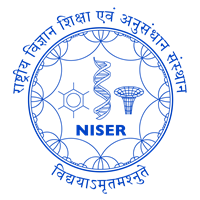

Associate Professor
pankajniser.ac.in
+91-674-2494000 > 2205
1996-2001 : Ph.D. (Molecular Biology) National Institute of Immunology, J.N.U. Campus New Delhi 110 067, INDIA
1994-1996 : M. Sc. (Biochemistry)
Department of Biochemistry, Nagpur University, Nagpur, Maharashtra, INDIA
1991-1994 : B. Sc. (Microbiology, Biochemistry, Chemistry)
Nagpur University, Nagpur, Maharashtra, INDIA
Molecular Genetic Study of Protein Biosynthesis
NIH Fellows Award for Research Excellence (NIH-FARE) for years 2005 and 2006.
The fundamental difference between prokaryotic and eukaryotic translation initiation is that the former uses Shine-Dalgarno (SD) sequence on the mRNA to recruit the small ribosome subunit and locate the AUG codon or rarely GUC, CUC or UUG codon as a translation start site, while the latter uses eIF4F complex to bind mRNA and locate AUG codon or rarely CUG, UUG or GUC as a start codon by 5` to 3` scanning mechanism. Some of the examples listed below show the involvement of a non-AUG codon as a translation start signal.
In Saccharomyces cerevisiae, GRS1 encodes two isoforms of Glycyl-tRNA synthetases, one initiates from an upstream in-frame UUG codon (encoding signal sequence for mitochondrial import) while the regular cytoplasmic version initiates from a downstream AUG codon. For the synthesis of Alanine t-RNA synthetase (ALA1) protein, a consecutive ACG ACG codon is utilized as an alternate translation start site. It has been reported recently that the MHC class-I molecule can load an antigenic precursor which is synthesized by using CUG as an initiation codon, recognized by leucine tRNA and non-conventional eIF2A translation initiation factor. A ribosomal profiling analysis of vivo translation study reported that translation initiation from upstream non-AUG codons is widespread in S. cerevisiae under starvation conditions. However, the importance and the basic mechanism for these initiations are still unclear. Several yeast mutants have been identified that can initiate at the UUG codon. These mutants were designated as sui– (Suppressor of initiation codon) phenotypes. sui– phenotypes are novel mutations that causes breakdown of AUG codon selection fidelity. Thus, sui– mutants provide an important tool to understand the molecular mechanism of non-AUG codon selection.
The focus of our lab is to understand the molecular mechanism of non-canonical translation initiation processes in Saccharomyces cerevisiae using molecular genetic techniques.
The key questions are as follows:
Ph.D scholars
M.Sc Students